Latihan Menerjemahkan Novel
Posted on: 16 November 2015
Bagi teman-teman pembaca blog ini yang ingin menjadi penerjemah novel, saya membuat blog lain yang khusus ditujukan untuk berlatih menerjemahkan. Silakan kunjungi latihanterjemah.wordpress.com
- In: Fantasy
- 6 Comments
I just finished reading this and, as what usually happens with a good book, right now I am feeling a little bit lost, as if I just parted with my best friends. Sigh.
The Tawny Man (TTM) is the third trilogy by Robin Hobb, the first being The Farseer Trilogy (TFT), the second The Liveship Traders (TLT). It returns to the story of FitzChivalry Farseer, the bastard prince of the Six Duchies kingdom, picking it up fifteen years after the end of TFT, building on conflicts and themes hinted in the previous trilogy.
The first book, Fool’s Errand, deals mainly with the theme of Old Blood or the Witted, the people who can communicate and bond with animals, and have long been persecuted by other people who regard this ability as dirty magic. Fitz himself is Witted, bonded to the wolf Nighteyes, which is one of the reasons he went into fifteen years of self-imposed isolation. But now a faction of this people, who styled themselves as the Piebalds, are planning to fight back, and they are somehow involved with the disappearance of Prince Dutiful. So Fitz must come out of hiding and find the prince and bring him back to the Buckkeep Palace, in time for his betrothal to a princess from the Out Islands.
The Golden Fool revolves around the intrigues and mysteries brought about by this betrothal, between Prince Dutiful and Elianna of the Outlislanders (the hated enemy in TFT), whose marriage is arranged to bring peace between the two peoples. The characters and story line from TLT also make their appearance, proposing an alliance between the liveship traders of Bingtown and the Six Duchies, for the sake of the dragon Tintaglia. The story becomes more and more complicated as Fitz has to juggle his relationship with all the people that come and go in his life.
In Fool’s Fate, Fitz accompanies the Prince to the Out Islands to fulfill a challenge proposed by Elliana, before she would accept Dutiful as her husband–slay the dragon Icefyre. Behind the challenge, stands the mastermind of all attacks against Buckkeep–the Pale Woman. In the end, Fitz must choose between his friend and his duty.
The title of the trilogy itself refers to the enigmatic character known as the Fool. In TFT he was King Shrewd’s Fool, who always seemed to look out for Fitz and gave him cryptic prophecies and finally became one of his best friends. Now he appears again as the tawny-skinned Lord Golden. As the friendship between him and Fitz deepens, so does the mystery that surrounds him.
As with the first two trilogies, the reason I fell in love with this story is the characters and the relationships between them. Good novels always have good characters, but what amazes me about Robin Hobb’s books is how she can create such a different relationship between different pairs of people, each one formed by the unique experiences that they share. There are many people who love and are loved by Fitz, but the great thing is, you can always see the difference between, for instance, his friendship with Nighteyes and the Fool, or between his respect for his two mentors Chade and Burrich, for Kettricken and Verity, or between his relationship with his three children Nettle and Dutiful and Hap, or his fondness for Thick and Lady Patience. They are all completely different from one another. It is not just the characters are great and real and believable and all that, but they have histories together, and I hang on to every word to find out what their futures are.
Another good thing that comes out of this is that each character creates its own little subplots so you get a myriad of plot threads weaving in and out of the story, forming a wonderful tapestry of great storytelling. It is just brilliant.I hope I can soon find other books that are as good as these.
The Summoner – Gail Z. Martin
Posted on: 31 Maret 2013
- In: Fantasy
- 2 Comments
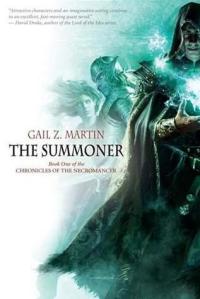 After reading a non-traditional fantasy in Among Thieves, I was ready for an old-fashioned one. The opening chapters of The Summoner showed some promise. A prince with undeveloped magical abilities was forced to flee from his home because his evil brother killed the rest of his family and seized the throne. I expected to read exciting adventures as the prince journeyed to a neighboring country and learned magic.
After reading a non-traditional fantasy in Among Thieves, I was ready for an old-fashioned one. The opening chapters of The Summoner showed some promise. A prince with undeveloped magical abilities was forced to flee from his home because his evil brother killed the rest of his family and seized the throne. I expected to read exciting adventures as the prince journeyed to a neighboring country and learned magic.
Well, he did experience some adventure with a ghost inn, a caravan, slavers, a haunted library, a warrior princess, but none of them was interesting.
He did learn about magic, but the description of how he learned was so vague that it didn’t give me anything to get excited about. In fact, everything related to magic in this novel was vague; I don’t understand why soldiers dislike and fear mages, why teleporting is limited to short distances, why certain things are forbidden in magic, other than because the author says so.
In addition, the characterization was very two dimensional. Such a pity. I was expecting great things, but now I don’t think I’ll continue reading the series.
Among Thieves – Douglas Hulick
Posted on: 16 Maret 2013
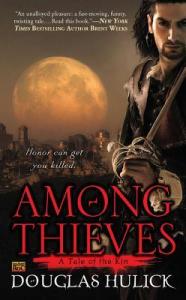 After reading some fantasy series where the protagonists are thieves or characters other than farmboys or nobility and quite enjoying them, I turned next to Among Thieves. This time the main character Drothe is a Nose, which is some kind of an informant for crimelords in a community of thieves called the Kin.
After reading some fantasy series where the protagonists are thieves or characters other than farmboys or nobility and quite enjoying them, I turned next to Among Thieves. This time the main character Drothe is a Nose, which is some kind of an informant for crimelords in a community of thieves called the Kin.
The story starts with a missing artifact, with mysterious clues that include an enigmatic name, a cryptic script that may or may not be a code, and a puzzling rare pilgrim token. As Drothe investigates these clues, even stranger things happen, with a mystifying book, perplexing attempted murders, shadowy Grey Princes, an odd falsified letter, magical items. In between you also get fencing scenes where Drothe has to face life or death situations.
You notice that I use a lot of synonyms for “mysterious”. Well, the whole thing is quite baffling. Drothe couldn’t make heads or tails of it, and neither could I. Now I like to be kept guessing when reading a novel, but I don’t like to be completely in the dark. So the story that started as interesting unfortunately became annoying and then frustrating for me. It doesn’t help either that Drothe isn’t easy character to relate to. Sure he’s honorable and clever and his loyalty to the Kin is admirable, but I fail to see how the existence of a bunch of criminals is something worth fighting for.
A well-written story, but not my cup of tea. However, if you like mysteries, lots of action scenes, and the world of criminals, you’ll get your fill in this novel.
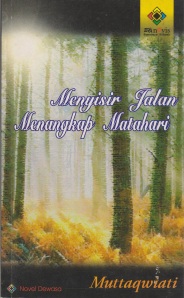 Novel ini bercerita tentang Ibnu Sabil, pemuda dari keluarga kaya yang merasa terkekang oleh tuntutan orang tuanya yang terlalu mementingkan gengsi, menyuruhnya kuliah di bidang yang tidak disukainya, demi mengejar harta dan status.
Novel ini bercerita tentang Ibnu Sabil, pemuda dari keluarga kaya yang merasa terkekang oleh tuntutan orang tuanya yang terlalu mementingkan gengsi, menyuruhnya kuliah di bidang yang tidak disukainya, demi mengejar harta dan status.
Ia pun minggat untuk mencari jalan hidupnya sendiri. Tetapi, pencarian itu bukanlah hal yang mudah. Terlepas dari kungkungan orang tua, tetap masih ada aturan dari tempat kerja. Ibnu menjadi gamang soal arti kebebasan yang hakiki. Demikianlah kemudian novel pendek ini menuturkan perjalanan Ibnu dalam pencariannya itu. Menjadi buruh pabrik, petugas kebersihan, sampai sopir.
Sayangnya, aku tidak terlalu menikmati ceritanya, terutama karena tokoh utamanya. Aku merasa Ibnu egois, minggat lalu tak pernah berkabar kepada keluarganya. Tidak pula tertarik menuntut ilmu atau mengembangkan diri, sehingga aku tidak bersimpati kepadanya.
Namun, dalam novel ini ada juga satu-dua bagian yang berhasil menyentuh kalbu. Inilah yang kusukai dari kebanyakan buku FLP, yang selalu mengingatkan pembacanya tentang Allah dan iman Islam.
Ketika seseorang terbebas dari belenggu setan, ketika seseorang terbebas dari hawa nafsu, ketika seseorang berani berbuat apa saja tanpa takut dihalangi, dimaki, dihujat, disiksa, dan sebagainya, kecuali takut kepada Allah, maka saat itulah seorang hamba Alah memperoleh kebebasannya yang hakiki.
 Math was one of my favorite subjects in school. I loved learning algebra and I enjoyed calculus in high school and college. I also take pleasure in doing logic puzzles now and then. But I can’t imagine myself doing it for a living, filling my brain with numbers day in and day out.
Math was one of my favorite subjects in school. I loved learning algebra and I enjoyed calculus in high school and college. I also take pleasure in doing logic puzzles now and then. But I can’t imagine myself doing it for a living, filling my brain with numbers day in and day out.
So it’s fascinating for me to read about people throughout history who did do this, who devoted their lives in search of mathematical truths. The author explains clearly why figuring out absolute mathematical proof is important and how it is different from scientific evidence or experiment.
Having understood that, I gained more appreciation for the quest to find proof for Fermat’s Last Theorem that lasted for more than 350 years. So I followed the narration with much interest and anticipation, from the origin of the theorem, through the various failed efforts to solve it, to Andrew Wiles’s seven-year undertaking to finally put the matter to rest. Along the way I also learned a little bit of history of mathematics, as well as some of its prominent figures.
I think the author has successfully written the mathematical parts of the narration in terms that a layperson like me can grasp. All the illustrations and appendices are a delight to read. So, although I don’t know the actual details of the calculations involved, I was able to get the gist of what the mathematicians were trying to do and therefore enjoy the story. A great read.
Gadis Kretek – Ratih Kumala
Posted on: 12 Februari 2013
 Kalau berbicara soal rokok kretek, aku selalu teringat pada cerita ayahku tentang pengalamannya yang unik tentang rokok ini. Waktu itu dia sedang di Amerika, duduk-duduk di sebuah kafe atau klub jaz, menikmati sebatang kretek. Lalu, tahu-tahu seorang bule menghampiri dan berlutut di sampingnya, melebarkan tangan seolah memohon. Orang bule itu bertanya, “Apakah Anda dari Indonesia? Apakah itu rokok kretek?” Rupanya demikianlah enaknya kretek Indonesia.
Kalau berbicara soal rokok kretek, aku selalu teringat pada cerita ayahku tentang pengalamannya yang unik tentang rokok ini. Waktu itu dia sedang di Amerika, duduk-duduk di sebuah kafe atau klub jaz, menikmati sebatang kretek. Lalu, tahu-tahu seorang bule menghampiri dan berlutut di sampingnya, melebarkan tangan seolah memohon. Orang bule itu bertanya, “Apakah Anda dari Indonesia? Apakah itu rokok kretek?” Rupanya demikianlah enaknya kretek Indonesia.
Itulah gambaran tentang kretek yang tersimpan di benakku saat aku pertama melihat novel ini, yang kemudian kubeli karena masuk 5 besar Khatulistiwa Literary Award 2012. Dan ternyata, tidak mengecewakan. Ada banyak sekali unsur yang kusukai dalam novel ini.
Cerita ini memuat berbagai detail tentang rokok kretek yang dikisahkan dari sudut pandang orang-orang yang berkecimpung di bidang itu, sehingga membuatku, yang tidak pernah merokok, merasa seperti memasuki dunia baru dan ikut menyelami perasaan orang yang menyukai kretek. Perkembangan kretek ini juga ditautkan secara apik dengan sejarah Indonesia, mulai dari zaman Belanda, Jepang, kemerdekaan, PKI, hingga masa kini. Inilah jenis novel sejarah yang kusukai. Unsur sejarah dan informasi dianyamkan ke dalam cerita dengan mulus, tidak membosankan.
Aku juga selalu suka membaca tentang tokoh seperti Idroes Moeria, yang berjuang untuk meraih sukses dalam bidang yang disukainya. Impiannya, rencananya yang disusun rapi, kemauannya merintis dari bawah, kerja kerasnya, upayanya untuk terus berinovasi.
Hubungan antara tokohnya pun menarik untuk dibaca. Senang rasanya membaca hubungan suami-istri yang mewujudkan cintanya dengan saling membela pasangan. Menyenangkan pula membaca hubungan ayah-anak seperti Idroes dan Dasiyah yang penuh kasih sayang.
Dari segi alur, cerita ini juga membuatku sedikit penasaran tentang Jeng Yah. Mula-mula penasaran kapan tokoh ini muncul, lalu penasaran soal apa yang terjadi antara Jeng Yah dan Soeraja. Kemudian, menurutku akhir ceritanya pun pas. Penyelesaian yang layak untuk konflik yang disajikan.
Aku senang bisa menemukan satu lagi penulis Indonesia yang kusukai. Kapan-kapan aku akan membaca karyanya yang lain.
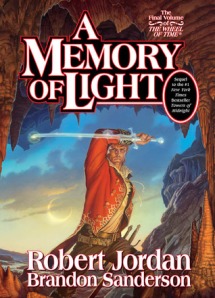 I started reading this series almost twenty years ago. I fell in love with the characters. I was engrossed in the story. I marveled at the world that Robert Jordan built in the first few books. I slogged through the middle books like any loyal fan. I cheered when things started to pick up again. I was sad when Jordan passed away and was excited when I found out that Brandon Sanderson was to continue the series. Book 12 and 13 were great so I had high expectations for this last book of the series.
I started reading this series almost twenty years ago. I fell in love with the characters. I was engrossed in the story. I marveled at the world that Robert Jordan built in the first few books. I slogged through the middle books like any loyal fan. I cheered when things started to pick up again. I was sad when Jordan passed away and was excited when I found out that Brandon Sanderson was to continue the series. Book 12 and 13 were great so I had high expectations for this last book of the series.
I never thought I would struggle with it, but the first half was hard to get through. There were so many potentially great scenes that fell flat (for example, when Rand tries to rally the nations for the Last Battle).
Luckily the second part of the book made up for the slow first part. The battle between Rand and the Dark One was great. The Last Battle with Mat at the helm also had many entertaining scenes.
I was hoping the book would use the momentum and end on a great note, but unfortunately the denouement scenes were a disappointment and almost ruined the book for me. They felt rushed and tacked-on, not at all the bittersweet goodbyes to beloved characters that I was expecting.
Overall, it’s still a good and enjoyable book. A fitting ending to a great series.
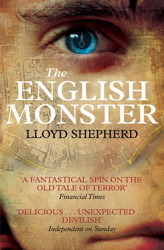 A friend offered this book to me as a gift, and I’m not one to pass up a free book. It’s a historical novel, which is a genre that I enjoy translating but haven’t read much.
A friend offered this book to me as a gift, and I’m not one to pass up a free book. It’s a historical novel, which is a genre that I enjoy translating but haven’t read much.
The book has two story lines, which are narrated in alternating chapters. The first one is based on the events surrounding the Ratcliffe Highway murders in London, which actually happened in 1811. I really like this part of the story. It is interesting to read how, in an era when police investigative work as we know it now was unheard of, the strange circumstances of these grisly murders forced the police to try new means of uncovering what actually happened, by examining evidence and clues and interrogating witnesses for background information about the victims outside the murders themselves.
The second story line tells about a young man who joined the crew of an English ship in search of wealth and adventure, but then whose life then took a very bizarre turn. This story lines then follows English maritime exploits through the centuries, including slaving and piracy. Not really a palatable subject for a story, which is inevitably filled with unsavory characters.
Overall, it’s a good read. True to its genre, this book is filled with fine historical details that transport us into the world of those times. I recommend it to anyone who loves historical novels.
Putri Harum dan Kaisar – Chin Yung
Posted on: 5 Januari 2013
Di antara empat belas novel karya Chin Yung, sebagian besar sudah pernah kutonton serial televisinya semasa SD, atau kubaca bukunya semasa SMP-SMA, atau keduanya. Putri Harum dan Kaisar ini termasuk salah satu dari tiga yang sampai saat ini belum pernah kubaca atau kutonton. Senang juga bisa membaca sesuatu yang “baru” dari Chin Yung.
Putri Harum dan Kaisar bercerita tentang Hong-hwa-hwe (Perkumpulan Bunga Merah), yang bertujuan menggulingkan dinasti Ceng yang berkuasa pada masa itu dan mengembalikan kejayaan bangsa Han.
Alur
Ada tiga alur cerita besar yang berjalin dalam cerita ini. Alur pertama berkaitan dengan Bun Thay Lay, anggota Hong-hwa-hwe yang ditangkap oleh tentara Ceng, dan upaya rekan-rekan perkumpulan membebaskannya. Alur ini serta beberapa subalurnya menghabiskan hampir setengah cerita. Sayangnya, aku tidak terlalu menyukainya karena hampir tidak ada gregetnya. Tidak ada budi-dendam yang berurat berakar, tak ada kisah cinta yang mengharu-biru. Hanya rencana pembebasan yang bolak-balik disusun dan gagal, membuatku agak bosan membacanya.
Alur kedua adalah keterlibatan Hong-hwa-hwe dengan suku Uighur. Suku ini muncul agak awal dalam cerita, saat berupaya merebut kembali Al-Qur’an pusaka milik suku itu yang dicuri oleh tentara Ceng. Hong-hwa-hwe membantu mereka sehingga terjalin persahabatan di antara dua kelompok ini. Di bagian cerita lebih belakang, Hong-hwa-hwe datang ke wilayah Uighur dan membantu mereka menghadapi serangan pasukan Ceng.
Alur ketiga adalah misteri seputar jati diri Raja Kian Long, yang sebenarnya mengaitkan semua alur lain. Gara-gara jati diri inilah Bun Thay Lay ditangkap oleh tentara Ceng. Demi mencari bukti tentang ini juga, Hong-hwa-hwe pergi ke wilayah Uighur, kemudian ke Siao-lim-si. Dengan memanfaatkan ini pula, Hong-hwa-hwe berani menembus istana raja dan menemui dengan Kian Long untuk menentukan masa depan negara.
Tokoh
Tidak seperti kebanyakan cerita silat yang menyorot satu orang jagoan, cerita ini lebih berkisah tentang perkumpulan Hong-hwa-hwe. Perkumpulan ini dipimpin oleh empat belas orang, yang kegiatannya masing-masing selalu disampaikan kepada pembaca, baik yang terlibat langsung dalam kegiatan yang sedang dituturkan dalam cerita, maupun yang sedang diberi tugas atau beristirahat di tempat lain. Namun, di antara keempat belas orang ini, tentu saja ada tiga tokoh yang mendapat porsi cerita lebih besar, termasuk kisah asmara.
Tokoh yang pertama tentu saja adalah Tan Keh Lok, sang ketua perkumpulan. Dalam alur cerita pertama, kegiatannya hanya sesekali bertempur dan membagi-bagi tugas kepada kawan-kawannya. Untunglah setelah alur itu selesai, dia diberi kesempatan bertualang sedikit. Bertemu gadis cantik, melawan musuh berat, melatih ilmu baru, membongkar rahasia masa lalunya sendiri, menghadapi dilema antara dua gadis, antara kepentingan pribadi dan negara. Sip lah.
Tokoh kedua adalah Ji Thian Hong, ahli strategi dalam perkumpulan ini. Dialah yang menyusun rencana saat Hong-hwa-hwe perlu melakukan kegiatan apa pun. Kisah asmaranya cukup romantis, dari benci jadi cinta. Sayangnya, cerita pribadinya terlalu singkat.
Tokoh ketiga adalah Ie Hi Tong, yang menurutku memiliki cerita yang paling menarik. Mulai dari kasihnya yang tak sampai, cedera saat ingin menebus dosa, bertemu dengan musuh berat sehingga dia harus mengerahkan daya-upaya untuk menyelamatkan nyawa, sampai menghadapi gadis dengan cinta bertepuk sebelah tangan.
Tulisan ini tentu belum lengkap tanpa menyebut sang Putri Harum. Dia putri kepala suku Uighur, yang kemudian menjadi unsur penting dalam pembicaraan Tan Keh Lok dan Kian Long dalam menentukan nasib negara Tiongkok.
Komentar terbaru